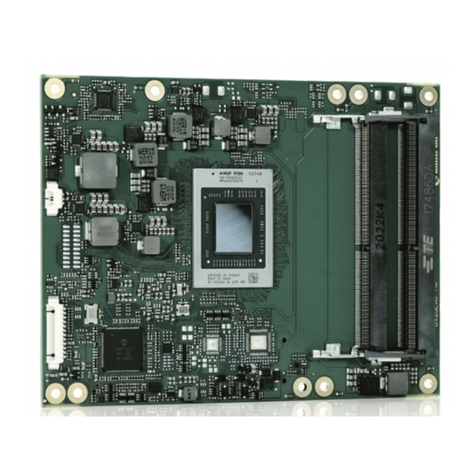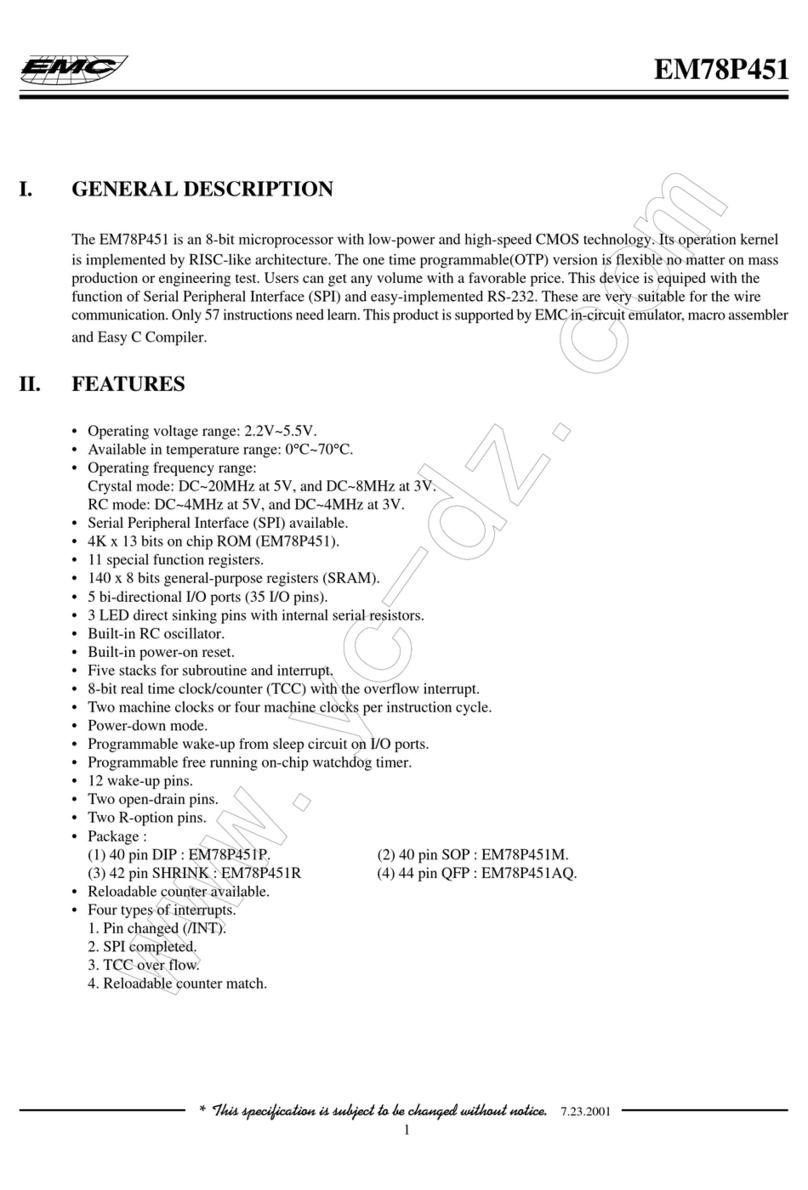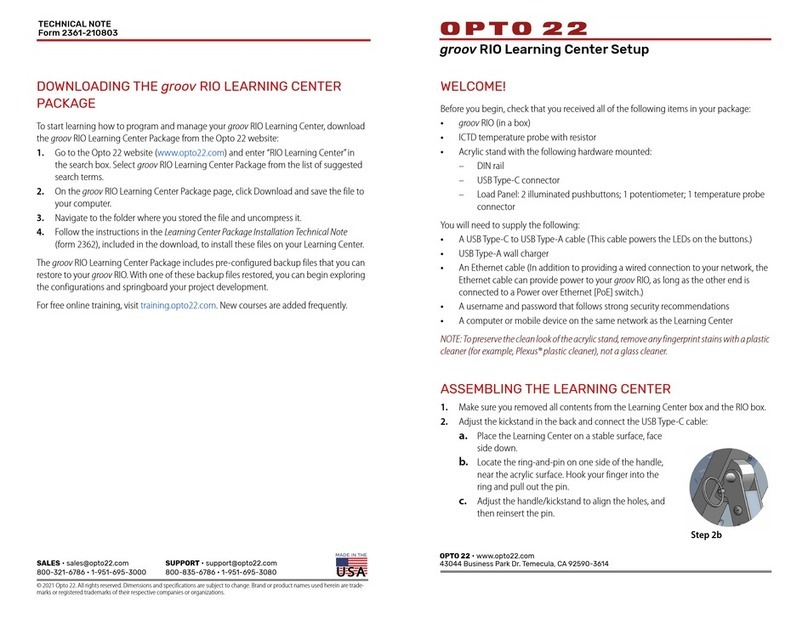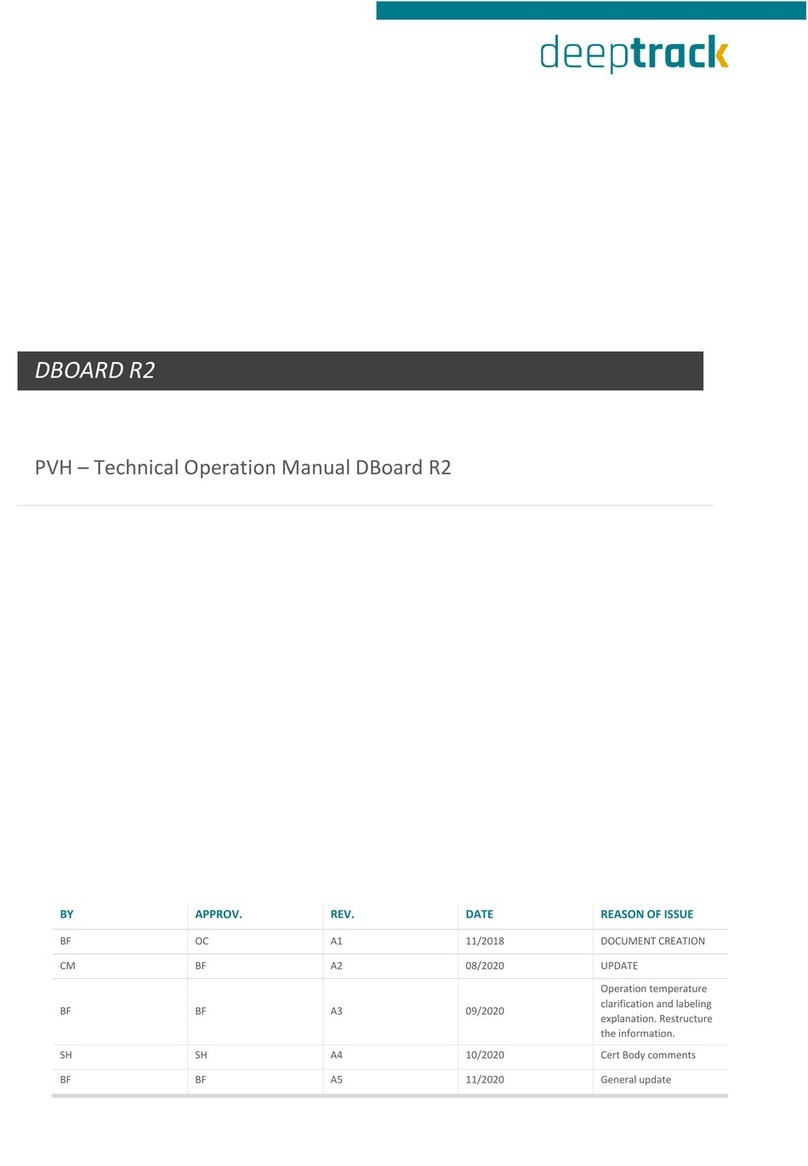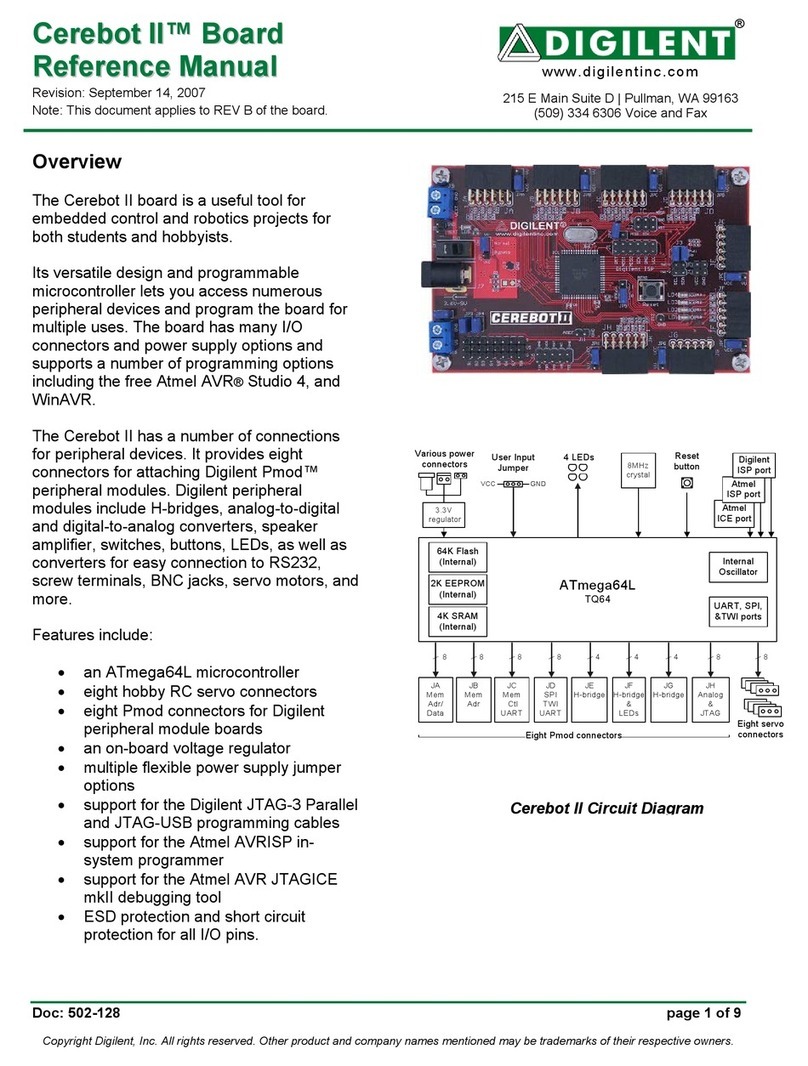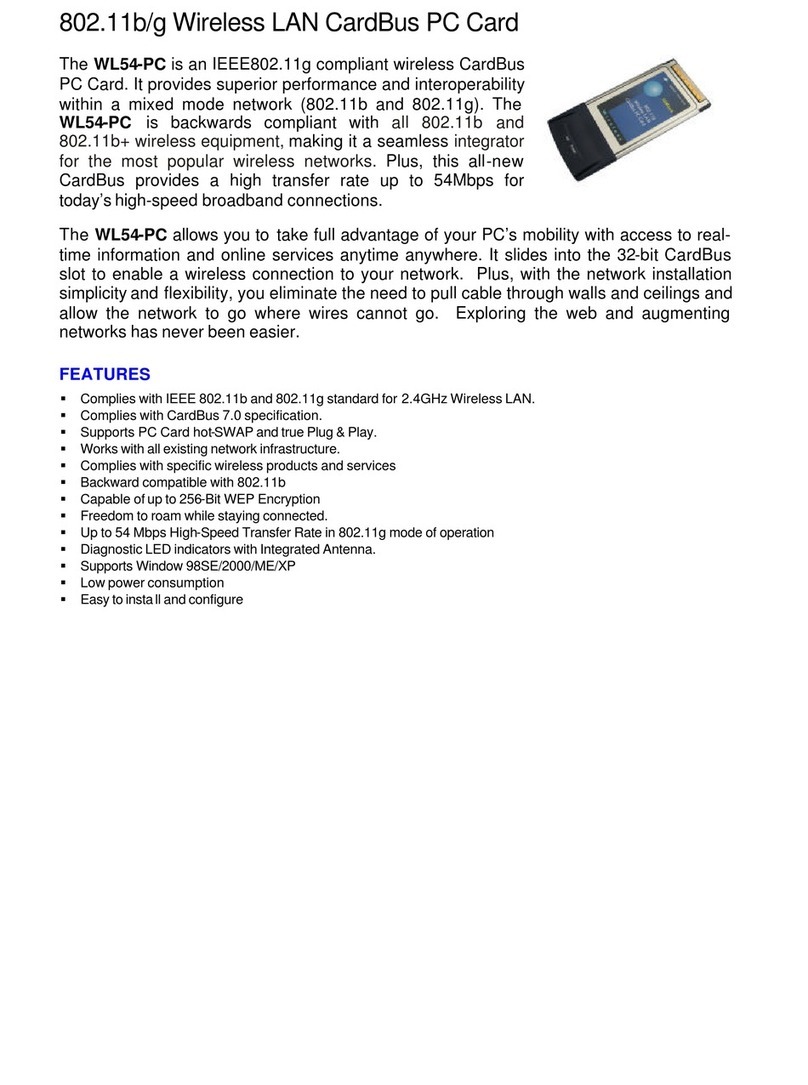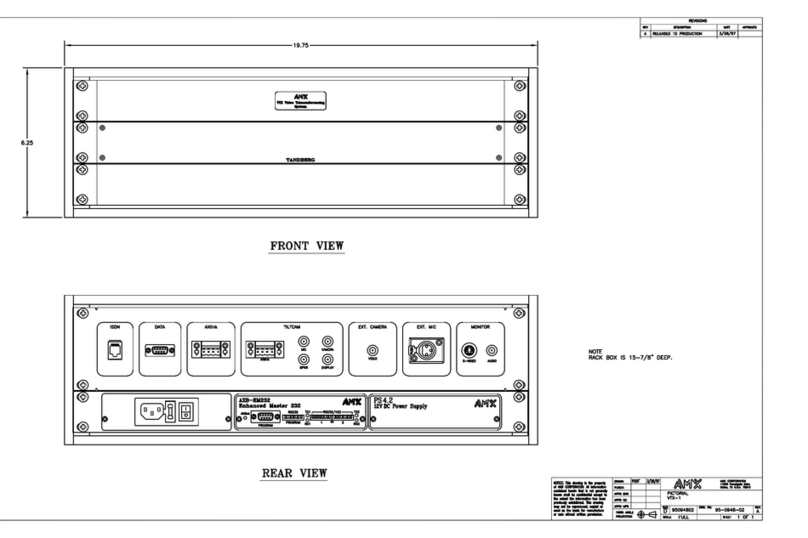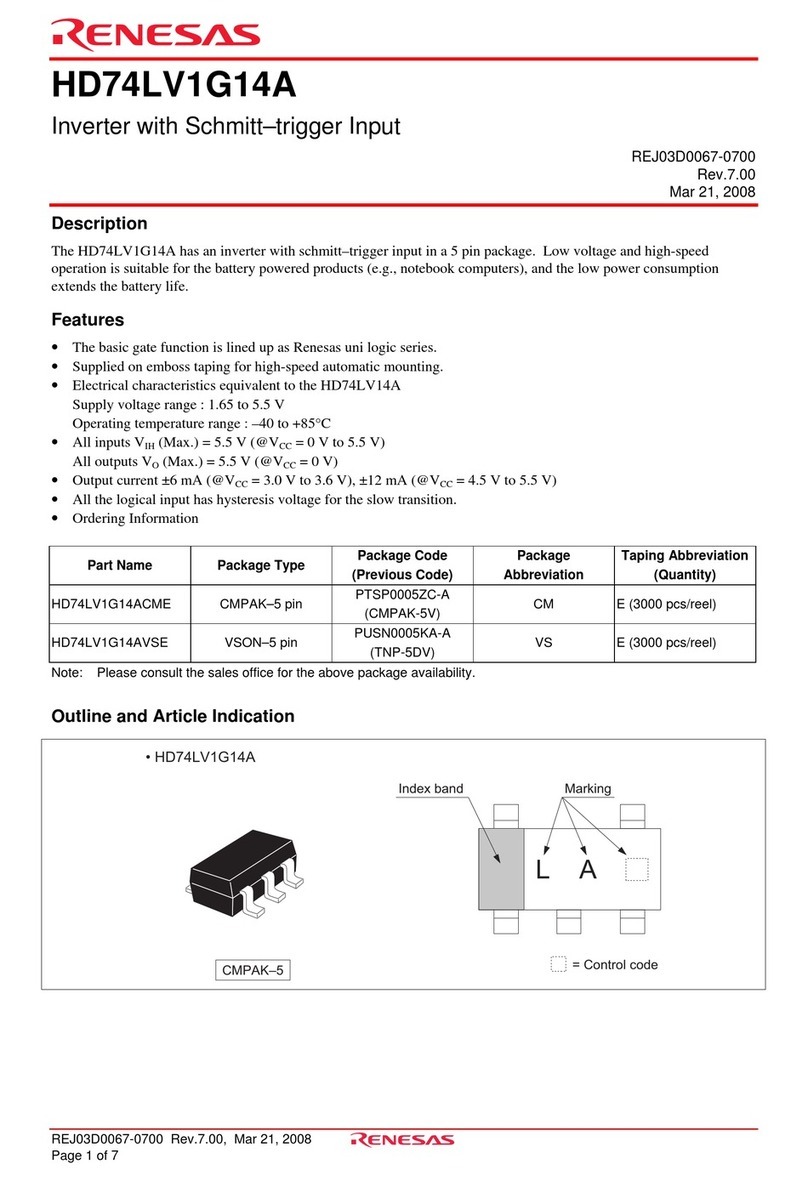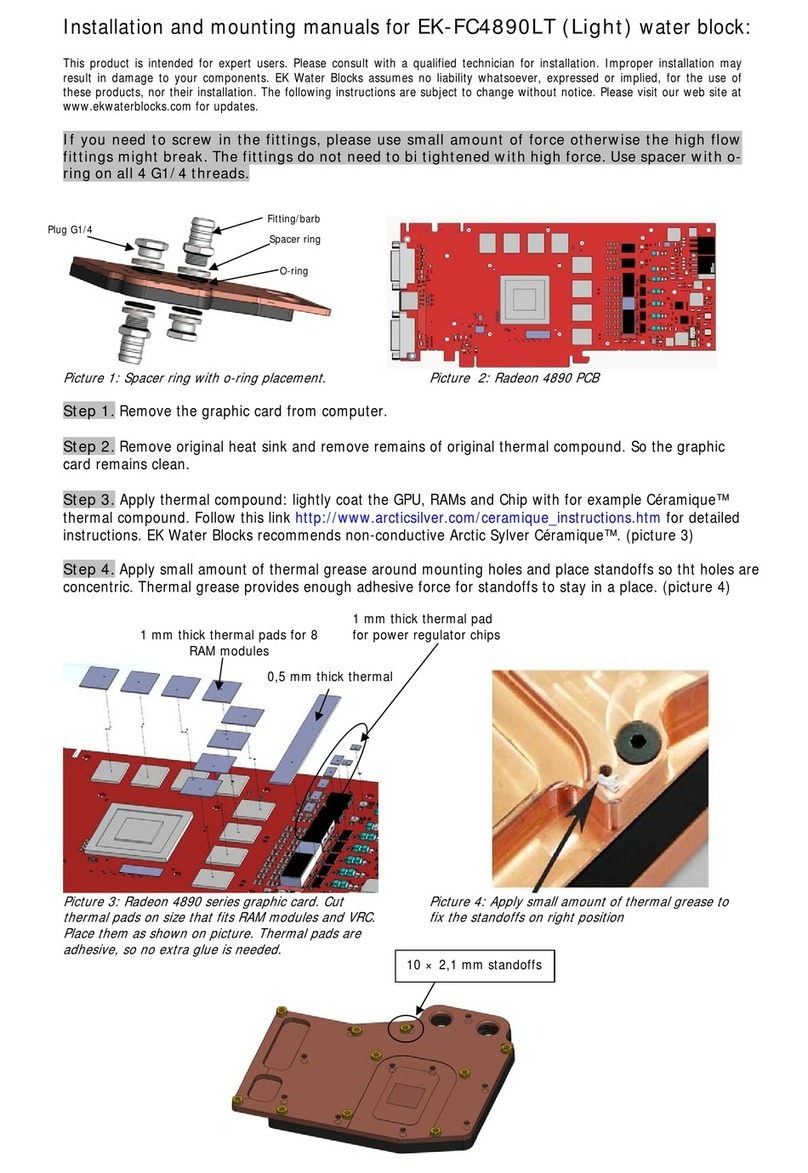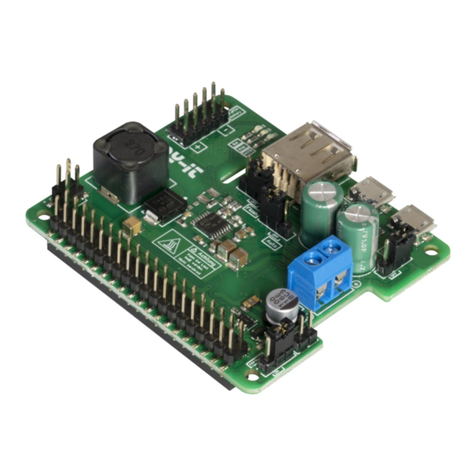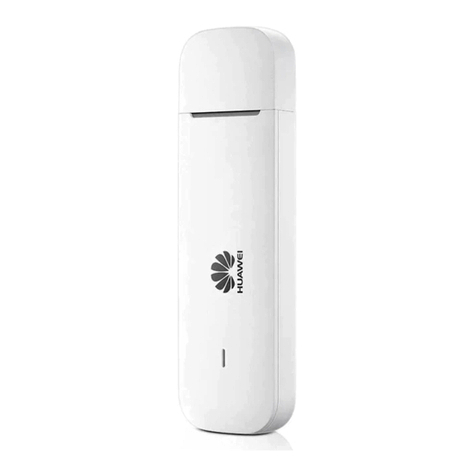S&T TPMS1209T02-ER User manual

Page 1 of 28
TPMS1209T02-ER
USER MANUAL
Suzhou Sate Auto Electronic Co., Ltd
www.sate.com.cn

Page 2 of 28
Table of Contents
I. TPMS1209T02-ER, Full-time Direct TPMS
-----------------------------------3
II. Parts of TPMS1209T02-ER
--------------------------------------------------------3
III. Installation and Programming of TPMS1209T02-ER Monitor
---------4
1. Installation of Monitor
-----------------------------------------------------------4
2. Programming of Monitor
-------------------------------------------------------5
2.1Programming of Transmitter ID
-----------------------------------------7
2.2 Standard Pressure Programming
----------------------------------------7
2.3 System Time Programming
---------------------------------------------- 9
2.4 Programming of Pressure Unit
-----------------------------------------11
2.5 Deletion of Transmitter ID
-----------------------------------------------12
IV. Installation of TPMS1209T02-ER Transmitter
-------------------------------12
1. Installation of Transmitter
---------------------------------------------------------13
2. Installation of Security Lock
-----------------------------------------------------14
V. System Function of TPMS1209T02-ER
---------------------------------------17
1. Full-time Monitoring
--------------------------------------------------------------17
2. High Pressure Alarm
---------------------------------------------------------------17
3. Low pressure level 1 alarm
------------------------------------------------------18
4. Low pressure level 2 alarm
-------------------------------------------------------18
5. Low pressure level 3 alarm
-------------------------------------------------------19
6. High Temperature Alarm
----------------------------------------------------------19
7. Quick Leak Alarm
-------------------------------------------------------------------20
8. Transmitter Trouble Alarm
--------------------------------------------------------21
VI. TPMS1209T02-ER Auxiliary Functions in Normal Mode
---------------21
Alarm Record Inquiry
------------------------------------------------------------------21
VII. Specifications
-------------------------------------------------------------------------24
VIII. Frequently Asked Questions
----------------------------------------------------25
IX. Warranty Term
-------------------------------------------------------------------------27
X. Important Notes
------------------------------------------------------------------------28

Page 3 of 28
I. TPMS1209T02-ER, FULL-TIME DIRECT TPMS
TPMS1209T02-ER is direct tire pressure monitoring system for trucks
which includes 1 monitor, 1 standard booster and 2 to 38 transmitters and
it can support monitoring of up to 38 tires. The transmitter can be
screwed onto the tire instead of the valve cap and then senses the pressure
inside the tire all the time and transmits the pressure information data to
the booster by RF technology. Then the booster transmits the pressure
information data to the monitor after received and magnified it. The
monitor can receive and deal with the data, then display the pressure on
the screen. The monitor can issue different alarms if the tire pressure is at
an improper level based on the standard pressure, so as to notify the
driver to treat the problem and avoid tire busting or tire damage.
Through TPMS1209T02-ER, the driver can keep the tire running under a
proper pressure so as to avoid excess gasoline consumption and keep the
vehicle in an easily controlled state.
II. Parts of TPMS1209T02-ER
1 Monitor
6 Transmitters
6 Security Locks
1 Bracket
2 Wrenches
4 3M Dual Lock
1 User Manual
1 Standard Booster (optional)

Page 4 of 28
Monitor
Transmitter
III. Installation and Programming
of TPMS1209T02-ER
1. Installation of Monitor
1.1 Insert the pedestal to the back of the monitor as shown in below
picture.
1.2 Choose a suitable location to install the Monitor onto the dashboard.
Make sure to first scrub the surface of the location with alcohol. Next,
strip off the liner of the 3M Dual Lock Fastener, put the sticky side
onto the suitable location, then fix the Monitor with another side of
the 3M Dual Lock Fastener on the platform.
Install Pedestal
LCD
Screen
Key
Alarm Lamp
Pedestal
Transmitter
Security Lock
Wrench

Page 5 of 28
1.3 The monitor power wire consists of 3 different colors of wires. The
Black wire should be connected to the ground. The Red wire should
be connected to the vehicle’s continuous power supply. The Blue wire
should be connected to ignition switch, when switched to “ON”, the
blue wire is connected with 12V power.
The monitor starts to work after it is powered. At this time the monitor
cannot receive any information as the transmitters are not installed. The
screen shows “NSP”, which means there are “No Transmitters
Programmed”.
2 Programming of Monitor
Through the monitor, the user can program up to 38 transmitters ID
number and the standard pressure for each wheel. Operation steps are as
following:
3M Dual Lock

Page 6 of 28
2.1 Programming of Transmitter ID
When the monitor is powered for the first time, the screen shows
“NSP”, which means there is no transmitter programmed into it. If the
user wants to program a new transmitter into the monitor, the operation
should be finished in programming mode. At this time, make sure the
transmitter to be programmed has not been screwed onto the valve cap
yet until the programming has been finished and the monitor returns to
normal mode.
Each transmitter has 4 groups of ID, for example when program the
transmitter with ID of 001 001 001 158 to front right tire position, the
user only needs to input the last 3 digits “158”. Monitor will record the
rest 3 groups of ID automatically.
1. After monitor is powered, the screen will display “NSP”, then press P
for 3 seconds to access the system programming mode, the first
interface is for ID programming as shown below:
2. Press any of the four arrow keys to choose the transmitter position
which needs to be programmed.
3. Then press S for 3 seconds to start programming and the digit flashes,

Page 7 of 28
then press up or down arrow key to adjust the value.
4. Once finish programming of the first digit, press →to start
programming the second digit which flashes. Press up or down arrow
key to adjust the value.
5. Press →again to program the third digit which flashes. Press up or
down arrow key to adjust the value.
6. When finish programming these 3 digits, press S for 3 seconds to save
with the screen flashes twice, beep buzzes twice. Then it will
automatically switch to next tire position.
7. Follow the above operations to program ID of other transmitters.
2.2 Standard Pressure Programming
For example, set the standard pressure of front right tire to 105 psi:
1. When finish programming ID, press P to access the standard pressure

Page 8 of 28
programming mode.
2. Then press any of the four arrow keys to choose the desired tire
position.
3. Then press S for 3 seconds to set the first digit which flashes. Press up
or down arrow key to adjust the value to 1.
4. Once finished programming the first number, press →to program
the second digit which flashes and then press up or down arrow key to
adjust the value to 0.
5. Once finished programming the second number, press
→to
program the third
digit which flashes and then press up or down arrow
key to adjust the value to 5. Then press S for 3 seconds to save with the
screen flashes twice, beep buzzes twice.

Page 9 of 28
Note: The default standard pressure is set to 100 psi in factory.
2.3 System Time Programming
Function: The system clock was preset in the factory. It is the base of
the alarm record, user can check the current date and time as
follows:
1. When finish programming the standard pressure, press P to access
interface for inquiry and programming of time/date, the first
interface displays the year, 1 07 stands for the year 2007:
2. Press ↓key to access the second interface, 211 stands for November
as shown below:

Page 10 of 28
3. Press the ↓key to access the third interface, 312 stands for 12th day
as shown below:
4. Press the ↓key to access the fourth interface, 416 stands for 16
O’clock as shown below:
5. Press the ↓key to access the fifth interface, 533 stands for 33 mins.
As shown below:
Under any interface of system time inquiry, press S for 3 seconds to
start programming. For example change the year to “09”, under the
year interface, press S for 3 seconds, the second digit flashes, press up
or down arrow key to adjust the value. Then press →key, the third
number flashes, then press the up or down arrow key to adjust the value
to“9”. At last press S for 3 seconds to save the change with screen
flashes twice and beep buzzes twice. Then it automatically switches to

Page 11 of 28
next interface for programming.
2.4 Programming of Temperature and Pressure Unit
1. After program the system time, press P to access interface for
programming temperature and pressure unit. The first interface
displays the temperature unit. As shown below:
At this time, press up or down arrow key to switch to the pressure unit
interface. As shown below:
2. Under any interface displaying temperature or pressure, press S key
for 3 seconds to start programming. Take change the temperature
unit as an example: under the temperature unit interface, press S
key for 3 seconds, the temperature unit “℃” starts flashing. Press
up or down arrow key to select the needed temperature unit.
After select the desired unit, press S key for 3 seconds to save with
the beep
buzzes twice. Temperature unit will stop flashing.

Page 12 of 28
2.5 Deletion of transmitter ID
1. When finish programming temperature and pressure unit, press P to
access the transmitter deletion interface. Only the programmed and
received transmitter will be shown and only the last 3 ID digits will
be shown:
2. Press any of the four arrow keys to locate the tire position to be
deleted.
3. Press S key for 3 seconds to delete with the screen flashes twice and
beep buzzes twice to confirm the deletion. Then it automatically
switches to next transmitter location.
Note: After programming, press P key for 3 seconds to return to normal
mode.
IV. Installation of TPMS1209T02-ER Transmitter
Before install the transmitter, make sure the transmitter has been
programmed into the monitor and monitor is under normal mode. If no
transmitter is programmed or transmitter signal is not received after

Page 13 of 28
program, the screen will display “NSP”.
When the transmitter is screwed onto the valve according to the
programmed position, the monitor can receive the signals and then
display the transmitter location icon, pressure, temperature information
on the screen. When all of information were received by the monitor and
the information are all normal, the screen display “ON”.
1. Installation of Transmitter:
1. Remove the current tire valve cap.
2. Inflate the tire to the standard pressure recommended by the
manufacturer or pressure needed by the user.
Note: Each transmitter has a lock to prevent it becomes loose or falls off.
Install the lock or not will not influence the functions of the

Page 14 of 28
Transmitter. If the user chooses to use the lock, please refer to the
below part of lock installation. Security Lock and Transmitter
should be installed at same time.
3. Screw the transmitter onto the tire valve.
4. Check the connection of Transmitter and valve with the soap solution
to confirm whether the transmitter is firmly screwed onto the valve or
not, check whether there is air leakage caused by the installation or the
seal of the Transmitters or not.
5. Once screwed onto the tire, transmitter can sense the pressure inside
the tire and transmit the data to the monitor, and the information will
appear on the screen within 6 minutes.
Note: 1. Please set the standards pressure of each tire on monitor
before install the transmitter. The standard pressure has
been set to100PSI in factory.
2. If one of your transmitters is broken or lost, the user only
needs to replace this one, the others will work as normal.
2. Installation of Security Lock
Each transmitter has a security lock and wrench to prevent it becomes
loose or falls off. The security lock has 3 screw holes and each one has 1
screw. As shown below:

Page 15 of 28
The function of the Lock is to connect the Transmitter and the Lock by
connecting the meshing part of them, and then fasten the Lock firmly by
the three bolts in the sockets, thus the Transmitter with the Lock can be
firmly screwed onto the valve and cannot be screwed off by a sudden
force.
Note: Security Lock and Transmitter should be installed at same time. If
the user chooses to use the lock, please refer to the below part of
lock installation.
Installation step of the Security Lock
1. First connect the meshing parts of the Lock and the
Transmitter to make them an integrated part, and
then screw the Transmitter together with the Lock
firmly onto the valve, as shown in the lefet figure.
2. Lock the Transmitter
Use the wrench to fasten the three bolts inside the sockets on the Lock to
Transmitter
Security Lock
Wrench

Page 16 of 28
make sure fix the Transmitter together with the Lock firmly onto the
valve. Then the Transmitter can not be screwed off unless the three bolts
are screwed off by using the wrench.
How to inflate the tire with a locked Transmitter
Before inflating the tire, please
1. Use the special tool to loose the three bolts inside the sockets on the
Lock.
2. Screw off the Transmitter.
3. Remove the Transmitter together with the Lock from the Valve.
Note: Install the lock or not will not influence the functions of the
Transmitter.
V. System Function of TPMS1209T02-ER
1. Full-time Monitoring
Function: TPMS1209T02-ER can monitor the tire pressure and
temperature whether the vehicle is running or parked.
Therefore to keep the driver informed of the tire state and
realize full-time monitoring.
2. High Pressure Alarm
Display mode:

Page 17 of 28
Function: the system will issue the high pressure alarm when the tire
pressure is 25% higher than the standard.
Alarm mode: the alarm lamp flashes, high pressure warning iron, tire
position icon and the audible alarm turn on together.
Treatment: press any key to stop the audible alarm. The red alarm lamp
remains on and the display reverts to the normal mode. At
this time user should adjust the tire pressure to the normal
level with the reasonable method. The red alarm lamp goes
off only when the tire pressure returns to the normal level.
3. Low pressure level 1 alarm
Display mode:
Function: the system will issue level 1 low pressure alarm when the tire
pressure is 12.5% lower than the standard.
Alarm mode: the alarm lamp flashes, low pressure level 1 alarm iron, tire
position icon and the audible alarm turn on together.
Treatment: press any key to stop the audible alarm. The red alarm lamp
remains on and the display reverts to the normal mode. At
this time the user should adjust the tire pressure to normal
level as soon as possible. The red alarm lamp goes off only

Page 18 of 28
when the tire pressure returns to normal level.
4. Low pressure level 2 alarm
Display mode:
Function: the system will issue level 2 low pressure alarm when the tire
pressure is 25% lower than the standard.
Alarm mode: the alarm lamp flashes, low pressure level 2 alarm iron, tire
position icon and the audible alarm turn on together.
Treatment: press any key to stop the audible alarm. The red alarm lamp
remains on and the display reverts to the normal mode. The
user should slow down the vehicle and drive to service shop
to inflate the tire. The red alarm lamp goes off only when the
tire pressure returns to normal level.
5. Low pressure level 3 alarm
Display mode:
Function: the system will issue level 3 low pressure alarm when the tire
pressure is 50% lower than the standard.

Page 19 of 28
Alarm mode: the alarm lamp flashes, low pressure level 3 alarm iron, tire
position icon and the audible alarm turn on together.
Treatment: press any key to stop the audible alarm. The red alarm lamp
remains on and the display reverts to the normal mode. The
user should slow down the vehicle and replace the tire with
the spare tire. The red alarm lamp goes off only when the tire
pressure returns to normal level.
6. High Temperature Alarm
Display Mode:
Function: When the temperature around the transmitter equals or exceeds
90℃, the system will issue the high temperature alarm.
Alarm Mode: the alarm lamp and temperature value flashes, tire position
icon and the audible alarm turn on together.
Treatment: press any key to stop the audible alarm. The red alarm lamp
remains on and the display reverts to the normal mode. The
driver should slow down
and adopt measure to cool down the tire. The red alarm lamp goes off
automatically when the temperature returns to normal level.
7. Fast Leak Alarm

Page 20 of 28
Display mode:
Function: the system will issue a quick leaking alarm when the pressure
drops more than 2.8 psi within 12 seconds.
Alarm mode: the alarm lamp flashes and the audible alarm turns on, the
tire position icon flashes.
Treatment: press any key to stop the audible alarm and the system reverts
to normal mode. Then slow down and check the correspondent
tire.
8. Transmitter Trouble Alarm
Display mode:
Function: If one transmitter fails to work, or the monitor cannot receive
the data because of the RF interference for 20 minutes, the
system will issue a transmitter trouble alarm.
Alarm mode: the audible alarm turns on, the red alarm lamp flashes, and
transmitter trouble alarm icon appears.
Treatment: press any key to stop the audible alarm. Then the system
Table of contents
Other S&T Computer Hardware manuals
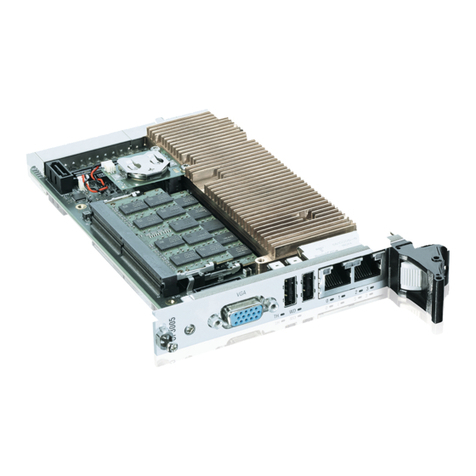
S&T
S&T Kontron CP3005 Series User manual
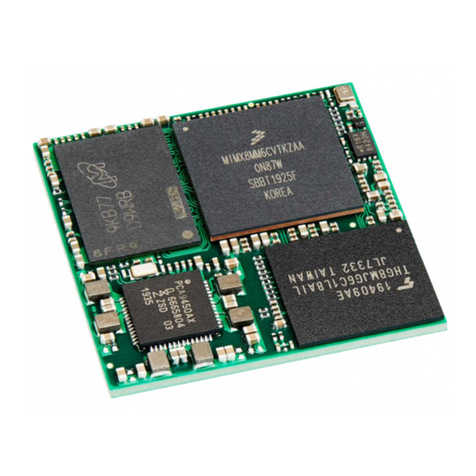
S&T
S&T Kontron SL iMX8MM User manual
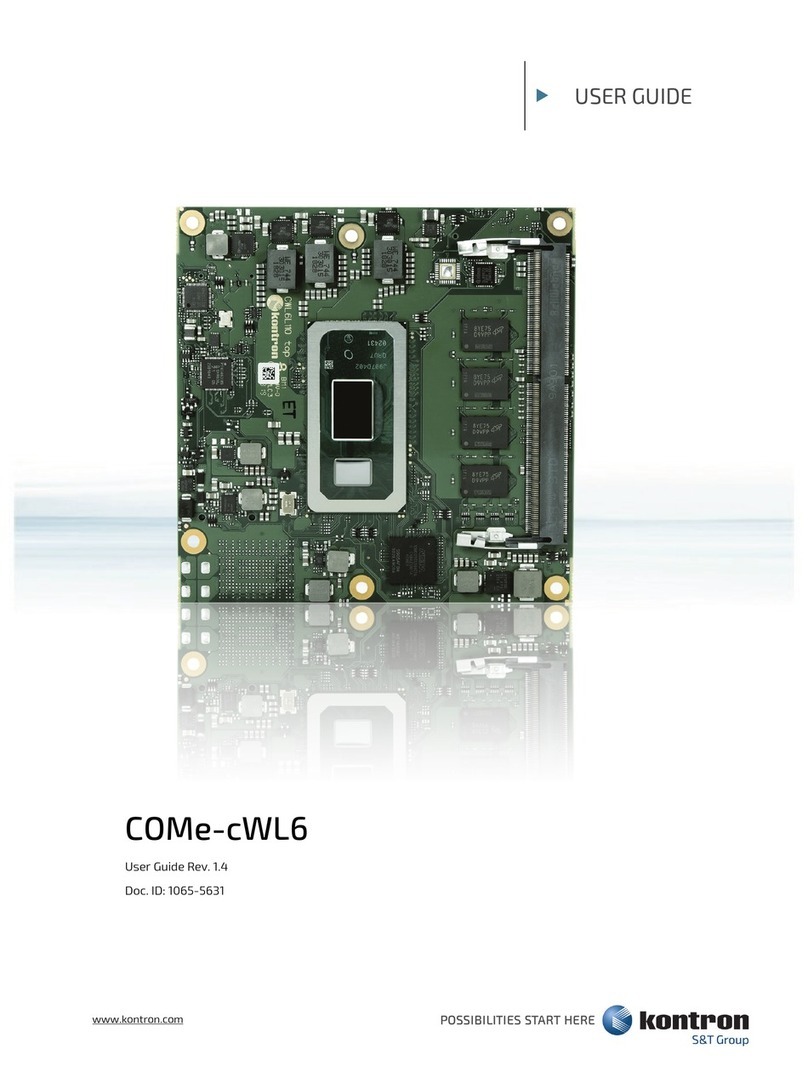
S&T
S&T kontron COMe-cWL6 User manual

S&T
S&T kontron KBox E-420-R1K/V1K User manual
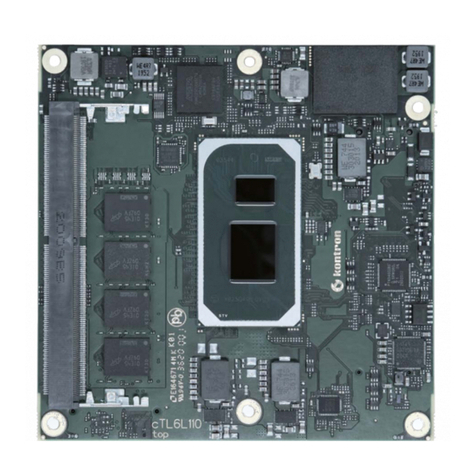
S&T
S&T Kontron COMe-cTL6 User manual

S&T
S&T kontron COMe-bCL6 User manual
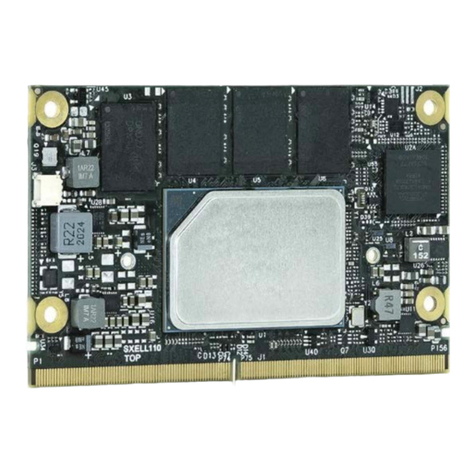
S&T
S&T Kontron SMARC-sXEL User manual
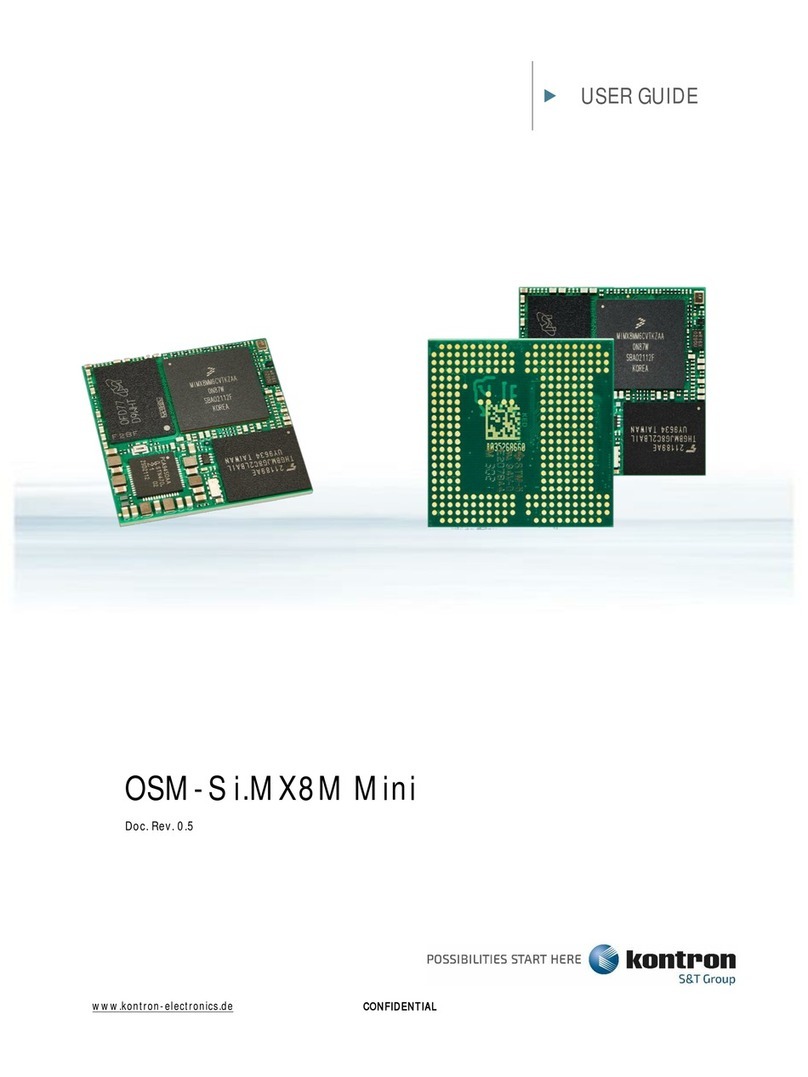
S&T
S&T Kontron OSM-S i.MX8M Mini User manual
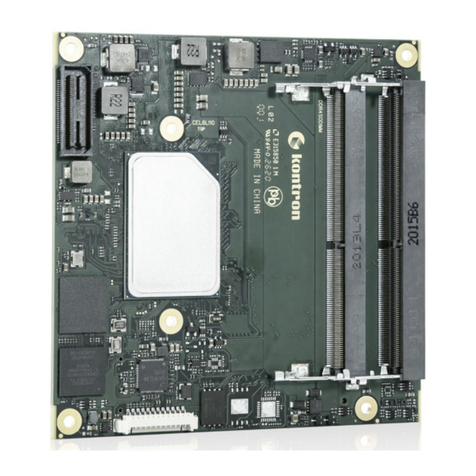
S&T
S&T kontron COMe-cEL6 User manual

S&T
S&T Kontron VX3060 User manual
